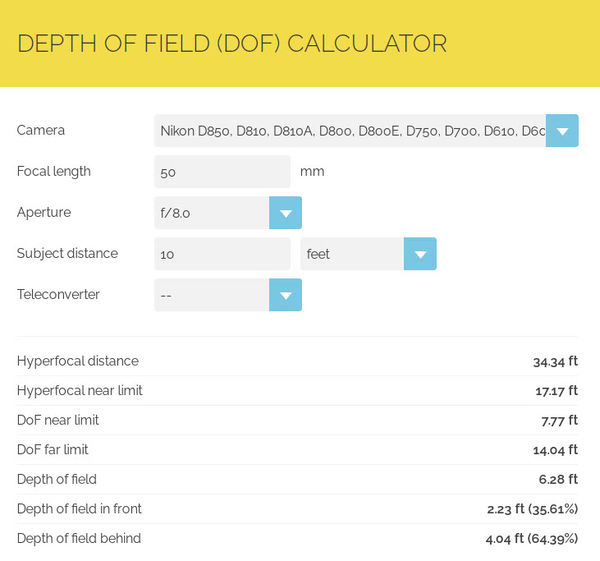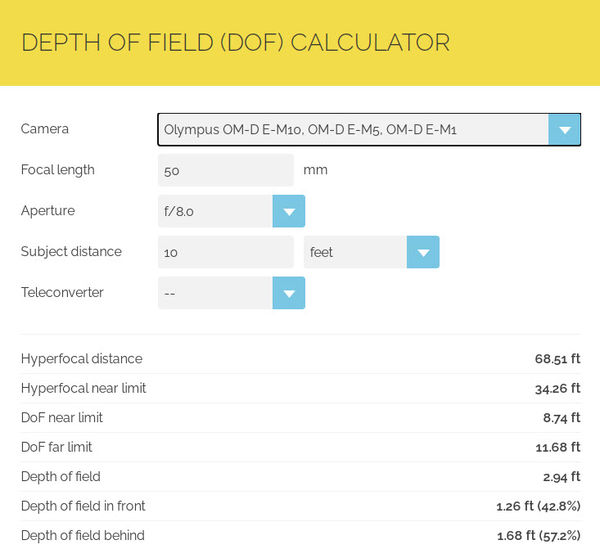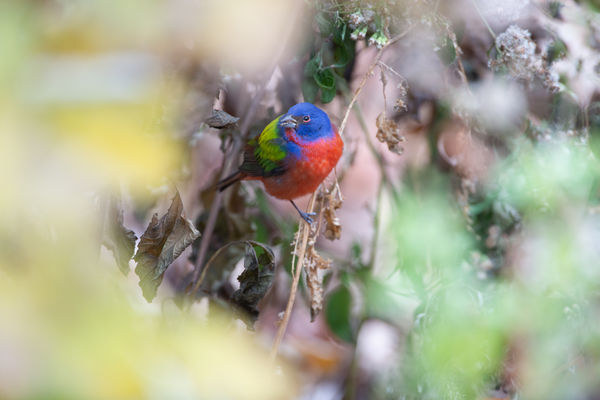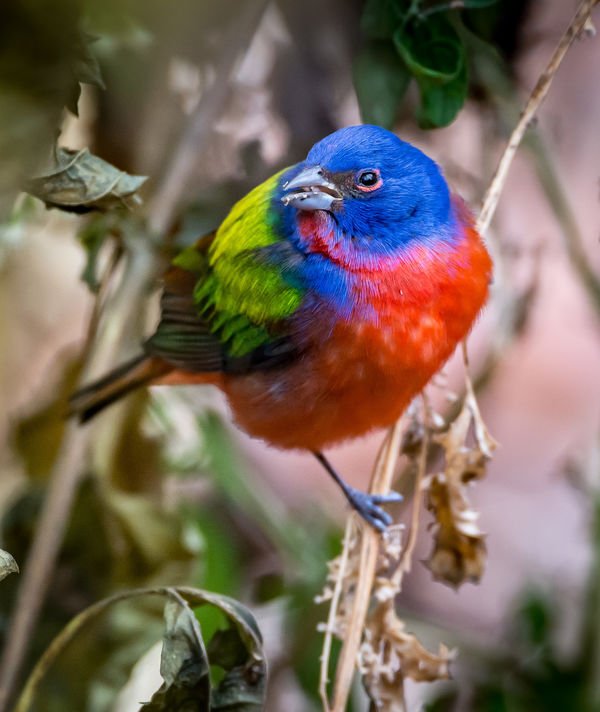They are both the same, Olympus 300mm, Nikon 300mm
Aug 17, 2020 12:04:59 #
Canisdirus wrote:
Everything he said is correct.
It’s a very long post riddled with so much error that it’s waaay too tedious to pick it apart. Solid UHH. You wanna buy it ? You’ll never be alone.
Aug 17, 2020 12:15:35 #
User ID wrote:
It’s a very long post riddled with so much error that it’s waaay too tedious to pick it apart. Solid UHH. You wanna buy it ? You’ll never be alone.
Sorry, you could not understand it...seemed pretty basic.
Aug 17, 2020 12:21:54 #
Aug 17, 2020 13:13:25 #
Canisdirus wrote:
Sorry, you could not understand it...seemed pretty basic.
Very basic ... very basic errors. But if you believe that sorta stuff you have plenty of company.
It’s not too complicated to understand. It’s just too overloaded to critique in detail.
I really have no disagreement with the first and last paragraphs. But the middle is mythology. So I can see where some of you support that post. The basics in beginning and end are accurate. The middle not so.
Aug 17, 2020 13:19:01 #
rond-photography wrote:
You are not magnifying anything. The size of the ... (show quote)
To get from a M4/3 sensor size to an 9"x12" print you have to magnify the image by a factor of 18.7X. To get to a 8x12 print you only have to magnify the image by 8.5X. If you only magnify the M4/3 image by 9.3X (roughly equivalent to the 8.4X when you take aspect ratio into account) the print will only be 6"x4.5" - so while your take may sort of work for devices such as monitors, which have a fixed resolution, when you print, everything changes. You have to keep in mind that the pixel count, while important for recording fine detail, does not help matters much when you take a tiny sensor and expand it to a print size. Those millions of tiny pixels get expanded, with the end result being a bit more noise, and in large print sizes, pixelation.
As far as a smaller sensor having greater depth of field at the same distance, focal length and aperture you are wrong again. In order to get greater depth of field, you have to either use a shorter focal length or a greater distance. At the end of the day, it's that persnicky magnification thing that spoils your take on this.
See the following comparison using the DoF online calculator on the PhotoPils site. It's pretty clear that at a distance of 10 ft, using a 50mm lens with an aperture of F8, the larger camera has a total DoF of 6.28 ft and the smaller camera has a total DoF of only 2.94 ft. This is to be expected, since the Circle of Confusion size on the full frame camera is 2x the size as on the M4/3 camera - .03mm vs .015mm.
And I haven't even included spatial resolution - because it is a bit more involved and harder to grasp. But it would show that the perceived resolution of a larger sensor is greater than the smaller sensor.
The attached pictures are from a full frame camera - the first is the uncropped image - 7360x4912 px - 36mp, and a 2208x2619 px - 5.8 mp - crop.
.
Aug 17, 2020 13:27:12 #
User ID wrote:
That is waaaaaaaaaay off. Not half size, not 10MP. It’s quarter size and 5MP. You do recall this is about FF and m4/3 ???
Not meaning to single you out. Yours just happens to be the most recent posting of that idea. Nothing personal. Bogus math is a disease around here and apparently contagious in the extreme. UHH is pretty much the “Phlat Urph Photo Phorum”.
Not meaning to single you out. Yours just happens to be the most recent posting of that idea. Nothing personal. Bogus math is a disease around here and apparently contagious in the extreme. UHH is pretty much the “Phlat Urph Photo Phorum”.
Thanks for correcting the math. I was thinking it was not half (some rule of square or whatever), but it does make the point even as I stated it. You make it even more clear that there is an advantage to using the crop sensor with the 300. Thanks!
Aug 17, 2020 13:30:36 #
kenArchi
Loc: Seal Beach, CA
Following gear samples.
Nikon D850 45mp. 1/2 @ 22.5mp
Nikon D810 36mp. 1/2 @ 18mp
Nikon 300mm f4 PF VR $1996
77mm. 3.5"x5.8". 27oz
Olympus 300mm f4 IS $2750
77mm. 3.6"x8.9". 52oz
Am I correct in the above gear?
It is said that FF has better image resolution?
Nikon D850 45mp. 1/2 @ 22.5mp
Nikon D810 36mp. 1/2 @ 18mp
Nikon 300mm f4 PF VR $1996
77mm. 3.5"x5.8". 27oz
Olympus 300mm f4 IS $2750
77mm. 3.6"x8.9". 52oz
Am I correct in the above gear?
It is said that FF has better image resolution?
Aug 17, 2020 13:48:33 #
wdross
Loc: Castle Rock, Colorado
Peterfiore wrote:
With either system, the quality you get or don't, is dependant on the ability of the user.
Definitely true.
Aug 17, 2020 15:12:17 #
[quote=kenArchi]FF or 4/3, they are 300mm. And they are both 600mm.
4/3 say it is equivalent to FF 600mm. Crop the FF 300mm from a FF camera by 1/2 and you have 600mm.
So don't FF cameras have better image resolution than smaller sensors?
While the sensor may be smaller in Micro 4/3 format.., the pixels are larger. So, to get a 40MP sensor from a 20, you'd have to double the physical size of the sensor. The new 20.4MP sensor in most newer M4/3 cameras will increase the sensitivity a bit, but you might get a slight increase in noise as well, which is compensated for with internal software. Otherwise the MP density in a M4/3 sensor is the same as a 40MP sensor that is twice as large..., at least that's what I've been told.., and it makes sense to me.
If anyone knows something factually different, please enlighten as I would love to know if I'm right or wrong?
4/3 say it is equivalent to FF 600mm. Crop the FF 300mm from a FF camera by 1/2 and you have 600mm.
So don't FF cameras have better image resolution than smaller sensors?
While the sensor may be smaller in Micro 4/3 format.., the pixels are larger. So, to get a 40MP sensor from a 20, you'd have to double the physical size of the sensor. The new 20.4MP sensor in most newer M4/3 cameras will increase the sensitivity a bit, but you might get a slight increase in noise as well, which is compensated for with internal software. Otherwise the MP density in a M4/3 sensor is the same as a 40MP sensor that is twice as large..., at least that's what I've been told.., and it makes sense to me.
If anyone knows something factually different, please enlighten as I would love to know if I'm right or wrong?
Aug 17, 2020 15:13:57 #
wdross
Loc: Castle Rock, Colorado
kenArchi wrote:
Following gear samples.
Nikon D850 45mp. 1/2 @ 22.5mp
Nikon D810 36mp. 1/2 @ 18mp
Nikon 300mm f4 PF VR $1996
77mm. 3.5"x5.8". 27oz
Olympus 300mm f4 IS $2750
77mm. 3.6"x8.9". 52oz
Am I correct in the above gear?
It is said that FF has better image resolution?
Nikon D850 45mp. 1/2 @ 22.5mp
Nikon D810 36mp. 1/2 @ 18mp
Nikon 300mm f4 PF VR $1996
77mm. 3.5"x5.8". 27oz
Olympus 300mm f4 IS $2750
77mm. 3.6"x8.9". 52oz
Am I correct in the above gear?
It is said that FF has better image resolution?
To get the best resolution from a full frame camera one uses a lens designed for a full frame camera. If I owned a full frame camera and I wanted a 600mm angle of view, I would buy a 600mm lens. I would not reduce my image quality, that I bought the camera for, by reducing the image area down to only 25%. If I wanted a 600mm angle of view for my 4/3rds lens, I would (and did) buy a 4/3rds 300mm lens. That will give me the best image quality rather than adapting a FF 300mm lens to my 4/3rds camera. The image quality is enough to produce a 30X40 print if, as Peterfiore indicated, one shoots properly for quality. The main difference with this line of thought is the 300mm for my 4/3rds is $2900 (when not on sale) while the FF 600mm is $9000 to $13K, depending on which brand. This is a real difference. So rather than trying to adapt this or that lens to emulate this of that lens of a different format and compare the ultimate quality of which format, it is just easier to shoot with any lens or format that will produce the max image size that one even expects to print. For me, that will be 30X40 quality prints. And that will save me size, weight, and cost (mainly cost) with my choice of format. Yes, a 300mm lens is a 300mm lens. But that does not mean they are equal on the cameras or formats that they were not made for.
Aug 17, 2020 16:54:10 #
I believe BebuLamar is correct. The capacity of a lens made for FF to draw a point— some term it circle of confusion (should be non-confusion)— Nikon's standard, as they state it, is .3; Canon's for FF is the same, but for aps, Nikon's is .2 but Canon's is .19 (because at a crop factor of 1.6 it must be magnified more to produce the same size image on the print compared to Nikon's 1.5 crop factor). Olympus refused to tell me the C/C they use but I believe it should be in the .15 range (The .xxx numbers are on the same scale). This must be getting very close to the limit of what can be produced in a mass-production lens. The lens will have the same resolution whether the sensor is 8mp, 16mp, 24, 32mp. It is now up to the fine details of the sensor to record the resolution: size of pixel site, how large is the gap between adjacent pixels, does each pixel sample a bit of the light falling on an adjacent pixel (having a curved lens to pull in more light). I am highly pleased with the images my 16mp Olympus produces— with a greater apparent depth of field— but my Canon 24mp does equally well, but barely better— and has less apparent depth of field. But using the Canon lenses on a Fuji with a 24mp sensor (via a converter, no glass involved), there is greater resolution, with depth of field appearing to be even less. Reminds me of when we were trying to get more resolution out of film, playing around with all kinds of developers, and developing dilutions. The great similarity between then and now is how well the manufacturers have gotten us to spend our money!
Aug 17, 2020 17:38:14 #
Aug 17, 2020 17:43:50 #
kenArchi wrote:
Following gear samples.
Nikon D850 45mp. 1/2 @ 22.5mp
Nikon D810 36mp. 1/2 @ 18mp
Nikon 300mm f4 PF VR $1996
77mm. 3.5"x5.8". 27oz
Olympus 300mm f4 IS $2750
77mm. 3.6"x8.9". 52oz
Am I correct in the above gear?
It is said that FF has better image resolution?
Nikon D850 45mp. 1/2 @ 22.5mp
Nikon D810 36mp. 1/2 @ 18mp
Nikon 300mm f4 PF VR $1996
77mm. 3.5"x5.8". 27oz
Olympus 300mm f4 IS $2750
77mm. 3.6"x8.9". 52oz
Am I correct in the above gear?
It is said that FF has better image resolution?
You’re neither correct nor incorrect cuz the smaller than FF format is not really specified. There are only two practical choices, which are APSC and m4/3. The above is correct for APSC, not for m4/3.
Since one of the lenses is by Olympus, that implies that the smaller format is m4/3. Your above megapixel reductions are by 1/2, and as such are correct only for APSC, so you have a problem there. The correct MP reduction factor for m4/3 is 1/4, NOT 1/2.
Bottom line is that when you crop the FF 850 and 810 images down to m4/3, they are greatly reduced, to 11.3MP and 9MP respectively.
Clearly, Olympus’s m4/3 sensor at 20MP provides much more pixel resolution than either of the Nikons when the distance to the subject would dictate cropping those FF sensors to 1/2 height and 1/2 width ... which acoarst is m4/3 format (ignoring minor issue of aspect ratio).
That doubling of the MP count yields a 40% gain in resolution which would often be visible in normal viewing of prints but might not amount to much on a monitor.
Not ignoring your other concern, to me the Olympus lens is overpriced. Although, by the pound, or by the foot, it’s much cheaper than the Nikkor :-)
The “size miracle” of the Nikkor was explained in an earlier post.
Aug 17, 2020 18:50:41 #
Peterfiore wrote:
With either system, the quality you get or don't, is dependant on the ability of the user.
To some degree, but essentially another hollow platitude.
Aug 17, 2020 20:59:33 #
The micro 4/3 with a 300mm lens has a viewing angle that's equivalent to FF 600mm. Let's suppose you are comparing a 20Mp micro 4/3 and you want to crop the FF photo by 1/2 to get the equivalent photo. You have to reduce each dimension by 1/2. Therefore your FF would have to have an 80Mp sensor to end up with the same 20Mp result. Unfortunately you would pick up the low-light penalty that micro 4/3 have without picking up the advantage of smaller size and lighter weight. Assuming you have a more typical 30Mp FF, then you will need to crop to a 7.5Mp photo to match the viewing angle of the 20Mp micro 4/3. If the 20Mp micro 4/3 photo is cropped to 7.5Mp with the 300mm lens the equivalent FF is 980 mm. Ken, I hope this helped and didn't confuse.
If you want to reply, then register here. Registration is free and your account is created instantly, so you can post right away.











